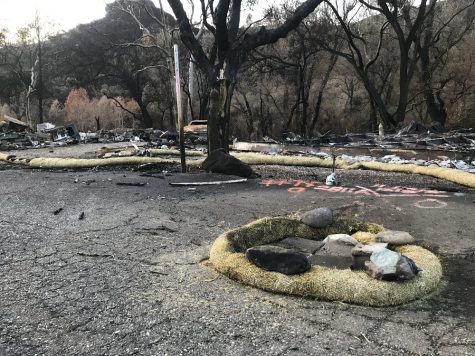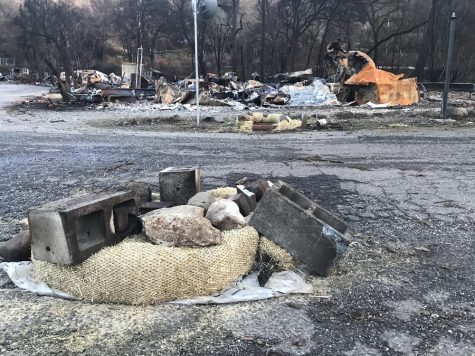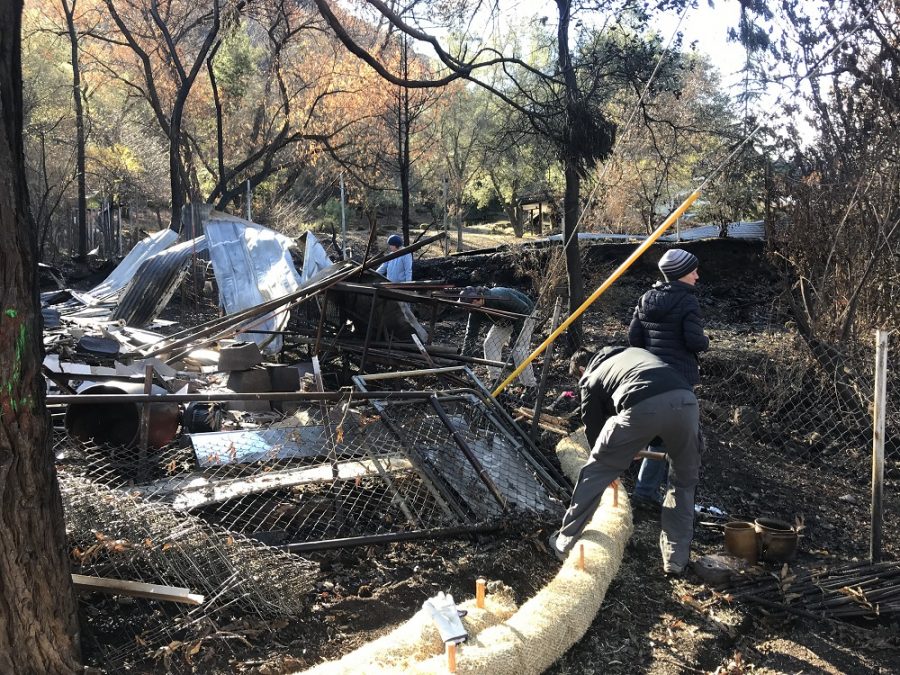With the Camp Fire 100% contained, evacuation orders are slowly being lifted and roads are opening up allowing residents of Honey Run and Butte Creek Canyon to return to their property for the first time since being ravaged by the Camp Fire. However, with cleanup efforts still in their early stages the danger is far from over.
The Butte County Public Health Department has advised those entering fire damaged areas to use the utmost caution and to avoid disturbing ashes as they may contain hazardous chemicals warning that coming into direct contact with wet ash may result in a chemical burn. Property owners are advised not to remove ash or debris without approval from the Environmental Health Division.
To make matters worse, on Nov. 19, the National Weather Service issued a Flash Flood Warning for the areas of Butte County impacted by the Campfire which lasted from Friday, Nov. 21 through Sunday, Nov. 23.
According to a press release from the Butte County Emergency Operations Center, “Properties impacted by the wildfires, and downstream of those areas, are at risk for flash flooding, mudflows and debris flows during periods of intense rainfall.” Residents in the impacted areas were advised they should be prepared to evacuate to high ground in the event of heavy rainfall.
The rains soon returned warranting another flash flood warning the following weekend, Saturday, Nov. 29.
Local conservationists are worried the rain may result in toxic runoff and debris entering Butte Creek which could pose a threat to the local salmon population that typically spawn this time of year. In an effort to minimize the potentially harmful runoff, volunteers from Friends of Butte Creek have been coordinating with property owners in the Butte Creek area in order to contain as much of the runoff as possible. Over the last two weeks the group has placed nearly 800 straw wattles around debris and along the small tributaries that flow into Butte Creek. These long bundles of straw are designed to reduce the rate of flow and catch sediment before it makes its way down the hillside and into the creek.


Elijah Portugal, Friend of Butte County volunteer and Senior Environmental Scientist with the Department of Fish and Wildlife’s Fisheries Branch, noted that the straw bale wattles are common practice for managing surface runoff.
“Typically they’re used around open construction sites but they’ll be serving the same purpose here,” said Portugal. “The idea is these wattles will slowdown the flow of that runoff and encourage more infiltration into the ground to prevent more of that toxic material from getting into the creek.”
Unfortunately, there are signs that toxic runoff may have been finding its way into Butte Creek long before the fire started. A 2010 report conducted by the Regional Water Quality Control Board identified Butte Creek as having “impaired waters” due to high levels of mercury. According to the report, 28 of 38 fish tissue samples exceeded the USEPA Fish Tissue Residue Criterion of 0.3 mg/kg. Tests also showed traces of ammonia, copper, mercury, lead, pesticides, herbicides, and even E. coli. However, these pollutants are not listed on the report as having an impact on Butte Creek as there is currently no threshold established for the pollutants. Due to a lack of monitoring, it will be difficult to know the full extent of the damages without the release of a full Environmental Impact Report.
Dan Christian can be reached at newseditor@theorion.com or @DanoftheOrion on Twitter.






